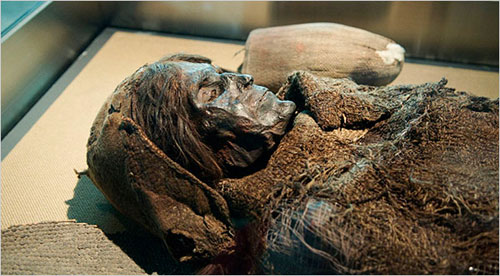
A wonderfully intriguing piece by Ed Wong in today's NYTimes on the role Archeology -- specifically, a set of mummified human remains -- plays in the conflict over independence for one of China's ethnic minorities.
Excerpt:
“Xinjiang has been an inalienable part of the territory of China,” says one prominent sign. But walk upstairs to the second floor, and the ancient corpses on display seem to tell a different story. One called the Loulan Beauty lies on her back with her shoulder-length hair matted down, her lips pursed in death, her high cheekbones and long nose the most obvious signs that she is not what one thinks of as Chinese.The Loulan Beauty is one of more than 200 remarkably well-preserved mummies discovered in the western deserts here over the last few decades. The ancient bodies have become protagonists in a very contemporary political dispute over who should control the Xinjiang Uighur Autonomous Region.
The Chinese authorities here face an intermittent separatist movement of nationalist Uighurs, a Turkic-speaking Muslim people who number nine million in Xinjiang. At the heart of the matter lie these questions: Who first settled this inhospitable part of western China? And for how long has the oil-rich region been part of the Chinese empire?

No comments:
Post a Comment